There is very little that is more cheering than catching sight of a whole field of bright sunflowers, their golden faces turned to the sun wherever it is in the sky. Goodness knows we all need a bit of cheering up these days, so if you have a spare bit of land then you could do a lot worse than learning how to grow a field of sunflowers!
What You'll Learn Today
- What Is A Sunflower?
- How Many Types Of Sunflower Are There?
- How Long Does It Take Sunflowers To Grow?
- How Often Should You Water Sunflowers?
- How Much Light Do Sunflowers Need?
- What Type Of Soil Do Sunflowers Like?
- How To Plant Sunflowers
- Sunflower Pests
- Uses For Sunflowers
- How To Use Sunflower Seeds
- Final Words
What Is A Sunflower?
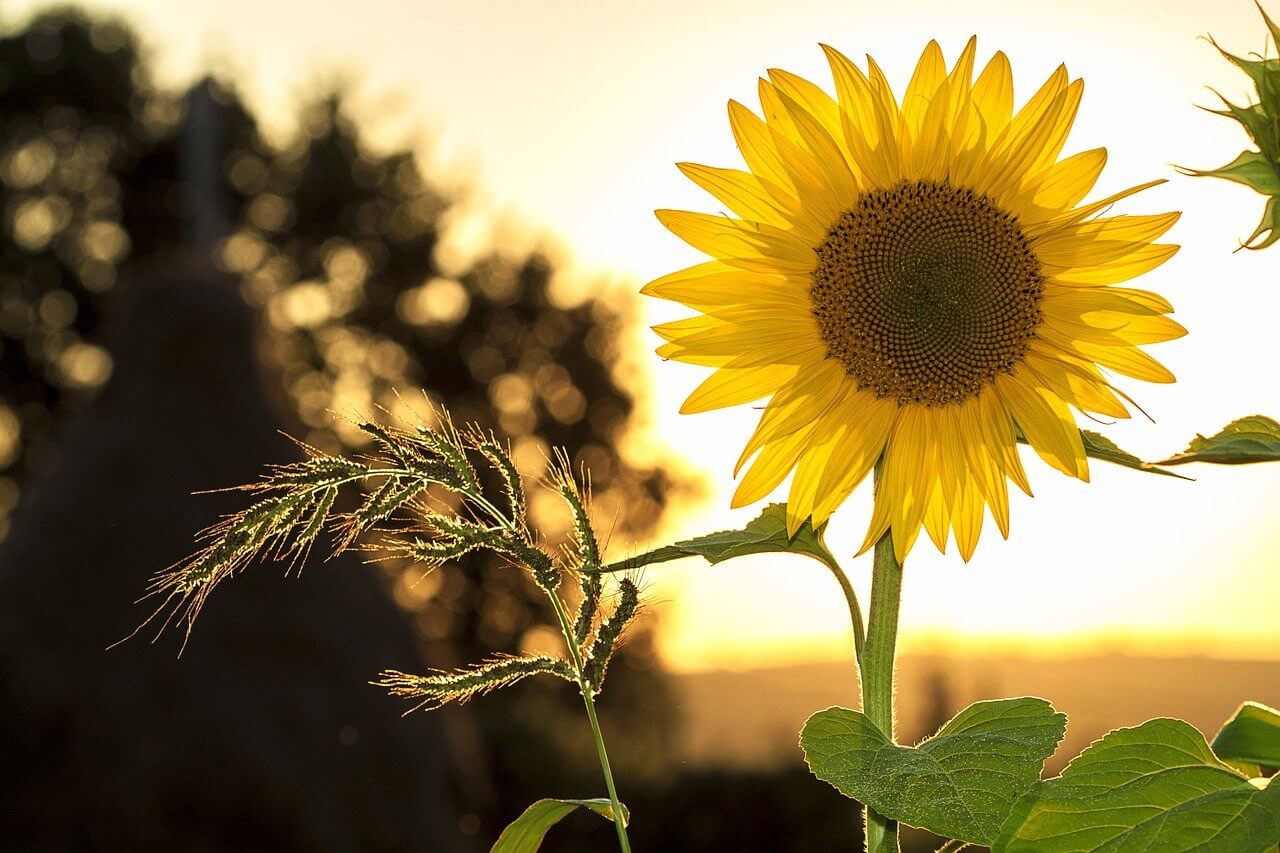
Sunflowers are actually a member of the daisy family, and are native to mainly North and Central America. They have been cultivated since at least 2100 BCE, and were first brought to Europe in the 16th century.
Sunflowers are not only beautiful, but very useful as well – they are an excellent food for birds, and they will attract our favorite pollinators – bees – as well as butterflies and other insects which are important to the ecosystem.
Sunflowers are also an important food source for humans too; it is mainly the seeds that are used, either by themselves or pressed into a healthier type of cooking oil.
There are many different types of sunflower in the family, and two main types:
- The annuals
- The perennials
Perennials tend to be smaller and produce more flowers per plant, while annuals are generally much bigger and produce only one flower head.
How Many Types Of Sunflower Are There?
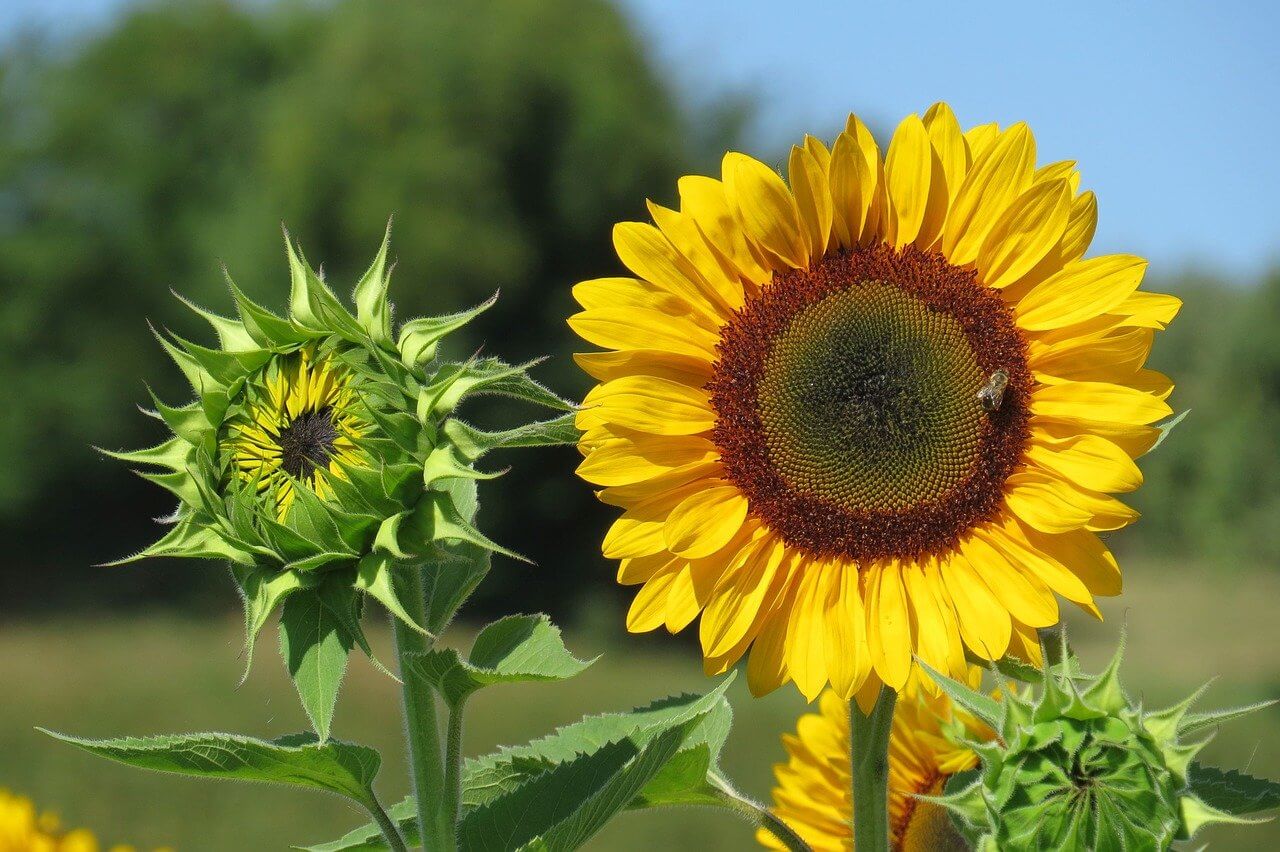
There are around 70 different sunflower species in the Helianthus family, which includes the big giants as well as the smaller, multi flowering species. Not all sunflowers are yellow either – they range from yellow to orange, red and even mauve.
You can go for a range of sunflower plants, and grow both the taller single flowered types and the smaller perennials – these often tend to have a wider range of colors too, so you can enjoy a good amount of variety in your field.
How Long Does It Take Sunflowers To Grow?

Sunflowers require a long growing season, and they need it to be a warm one. There are many variables, but generally it takes between 80 and 120 days for your sunflower to turn from a little seedling into a flowery giant.
Big, annual varieties will get pretty big pretty quickly, and you can almost see them growing taller by the day! Smaller perennials will have the same amount of growing time, but they won’t grow as big.
How Tall Do Sunflowers Get
There is a great diversity in sunflower sizes. The bigger annuals have been measured at as tall as 16 feet, while the smaller varieties, which have been developed for smaller spaces, don’t often get bigger than a foot or two.
The seed heads are equally as impressive as the height in the taller varieties – some have been measured at over a foot wide! Smaller plants, obviously, will produce smaller seed heads and fewer seeds.
How Often Should You Water Sunflowers?
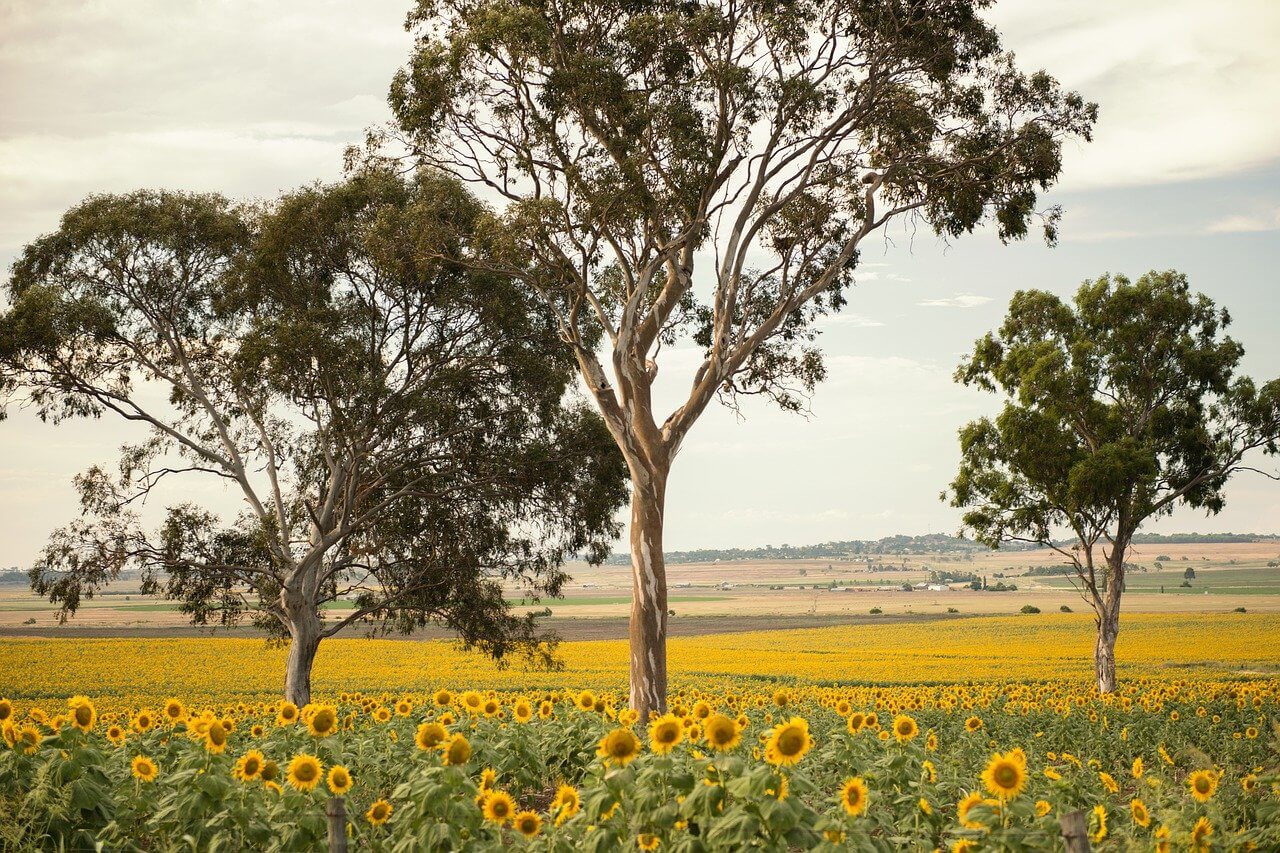
When they are just planted, and when they are still small, you should water your sunflowers frequently, at a distance of 3-4 inches away from the plant. As the plant becomes established you should water less often, but deeply, to encourage the roots.
Overwatering sunflowers can cause them to rot underground, then your whole crop will be lost. Once a week should be plenty of watering, and make sure you water away from the plant, to encourage a good strong root system.
How Much Light Do Sunflowers Need?
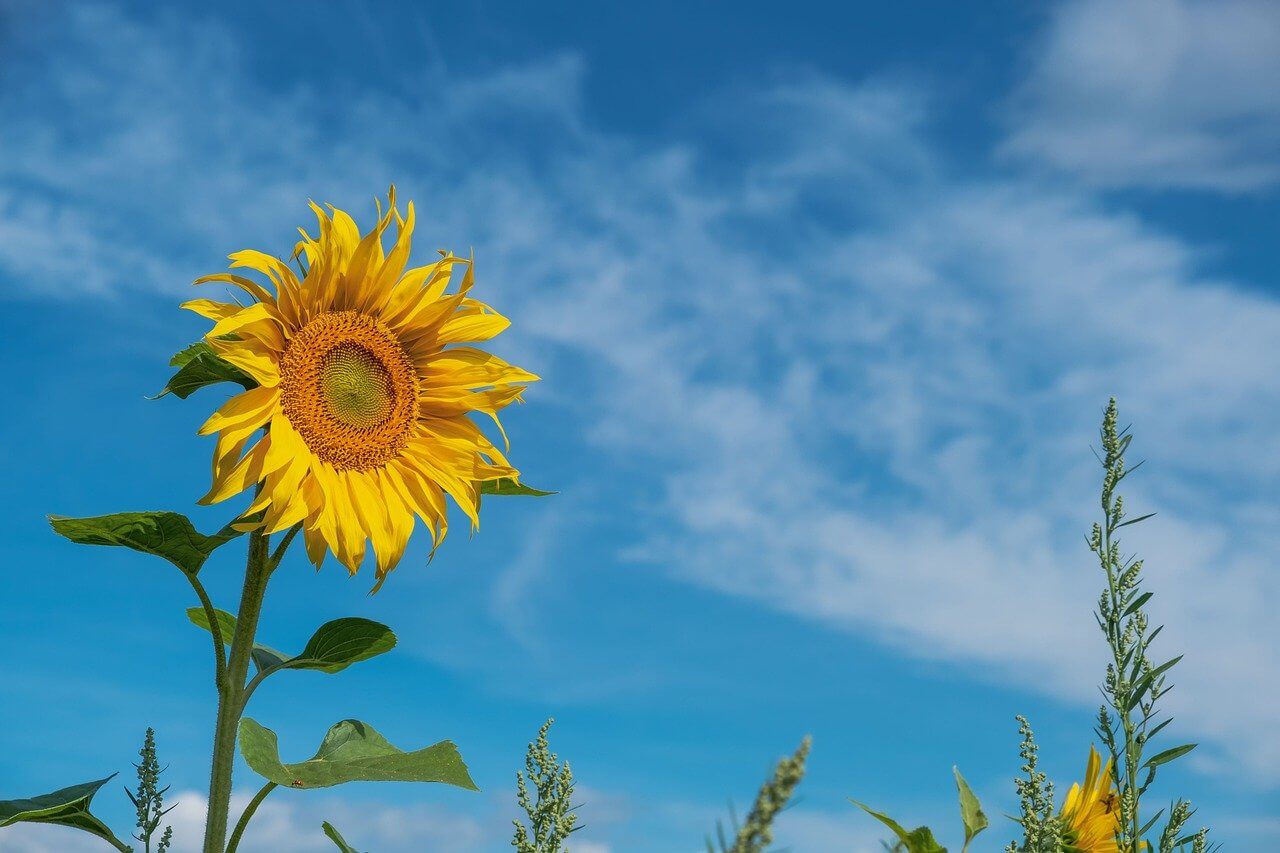
Sunflowers do need long days of good sunlight, more than anything else. They are called sunflowers because they follow the sun around the sky, to maximize the amount of light they get, and if they don’t get enough then they won’t thrive.
These sun worshipers perform at their best when they get between 6 and 8 hours of direct, full sunshine every day. If you have a nice south facing spot in your garden then this is definitely the place to plant your sunflowers!
If you are growing your sunflowers in a field then go for one that has as little overhanging vegetation in the hedges as possible, to ensure that the plants at the side of the field don’t get overshadowed.
Sunflower Positioning
Plant your sunflowers in the warmest area you can, which receives the most direct sunlight. You should also make sure it is an area which is not too affected by strong winds, and take care to plant your sunflowers away from other tall or climbing plants.
Sunflowers do grow well with some other species of plant, notably Soybeans, but take what you plant them with, as some plants like the same types of nutrient and thus the two types can prevent each other from thriving.
What Type Of Soil Do Sunflowers Like?
Sunflowers are actually not too fussy when it comes to their soil requirements. They don’t need fancy compost or monthly applications of fertilizer; just common or garden soil (excuse the pun!)
The main thing to remember with sunflowers is that they don’t like to get too wet, so make sure their soil is well draining and preferably a bit sandy (you can always add sand and grit if your soil is a heavy clay type).
Of course, like all plants, sunflowers will benefit from a good feed every now and then, and you may find that it makes them grow taller and more vigorous – but they are happy enough in relatively poor soil, and will still produce flowers.
If you wish to feed your sunflowers, then use a nice organic feed, and dilute it according to the package instructions, then add this around once a month for the best results.
How To Plant Sunflowers
- Prepare your soil first, by digging in some good, slow release organic fertilizer – you can find this in your local gardening shop, or make friends with a local farmer and get your hands on some well rotted horse manure.
- Dig the fertilizer into the soil, about 8 inches down. You should allow your sunflowers a deep bed, as they have long roots which will need to spread out far.
- The best way to grow sunflowers is to sow the seed directly into the ground – these plants send out long tap roots, that can quickly get stunted in a pot and can affect the growth of the plant in the future. That being said, there are many different varieties of sunflower, and some may be more suitable for growing in a pot than others.
- You should get the seeds in early, as sunflowers have a long growing season, so you can start planting them as soon as the weather turns to spring and there is no more danger of frost or cold nights.
- Plant the seeds about 1 inch deep into the soil, by planting 5 or 6 together and leaving 8 inches between each group. It is sensible to apply some sort of slug control at this point, to prevent the slimy creatures from mowing down your seedlings.
- You should see seedlings within 10 days, and when they are established you can thin them out so that only the strongest and hardiest are left to grow. You should maintain a distance of at least 6 inches between each plant.
- As time goes on, you should thin the plants out even further, as they won’t grow very well if they are too close together, and they may well end up damaging each other if they knock together in the wind.
- The plants will need to be well watered, especially in dry hot weather, but do ensure that you are not overwatering, as the roots can rot if they are left to sit in waterlogged soil for long periods.
- If you are growing giant sunflowers, then you may wish to stake the plants as they grow taller, because the weight of the seed heads can sometimes be too much for the plant to handle and it may break.
- If you are growing smaller perennials for the flowers, consider pruning off one or two of the smaller blooms to ensure that the bigger ones flourish better.
If you like a visual guide, check out this video that should tell you all you need to know about growing sunflowers:
Sunflower Pests
Sunflowers are pretty hardy plants, and don’t suffer too much in the way of pests and diseases. When they are tiny seedlings you will need to protect against slugs, but as they grow their tough stems are not so attractive to slimy critters.
Your sunflower crops can, in damp conditions, be susceptible to mold and fungal diseases, such as downy mildew and rust. If you spot these conditions early you can treat them with a general fungicide spray. Here’s our article on different reasons your sunflowers may be dying/wilting.
Birds and squirrels absolutely love sunflower seeds, and it is these pests that will have the most effect on your plants. If you want to eat the seeds you will need to protect your plants from these marauders!
Netting is effective at keeping birds off, as is hanging up bird scaring devices such as strings of CDs or Christmas tinsel. You can also place net bags over the heads of the sunflowers, to protect the seeds inside.
If you have deer in the vicinity, it is definitely worth putting up a fence, as deer will often bite the tops off the sunflowers, ruining your crop of flowers and seeds. You should also try to prevent your dogs and cats from eating them.
Uses For Sunflowers
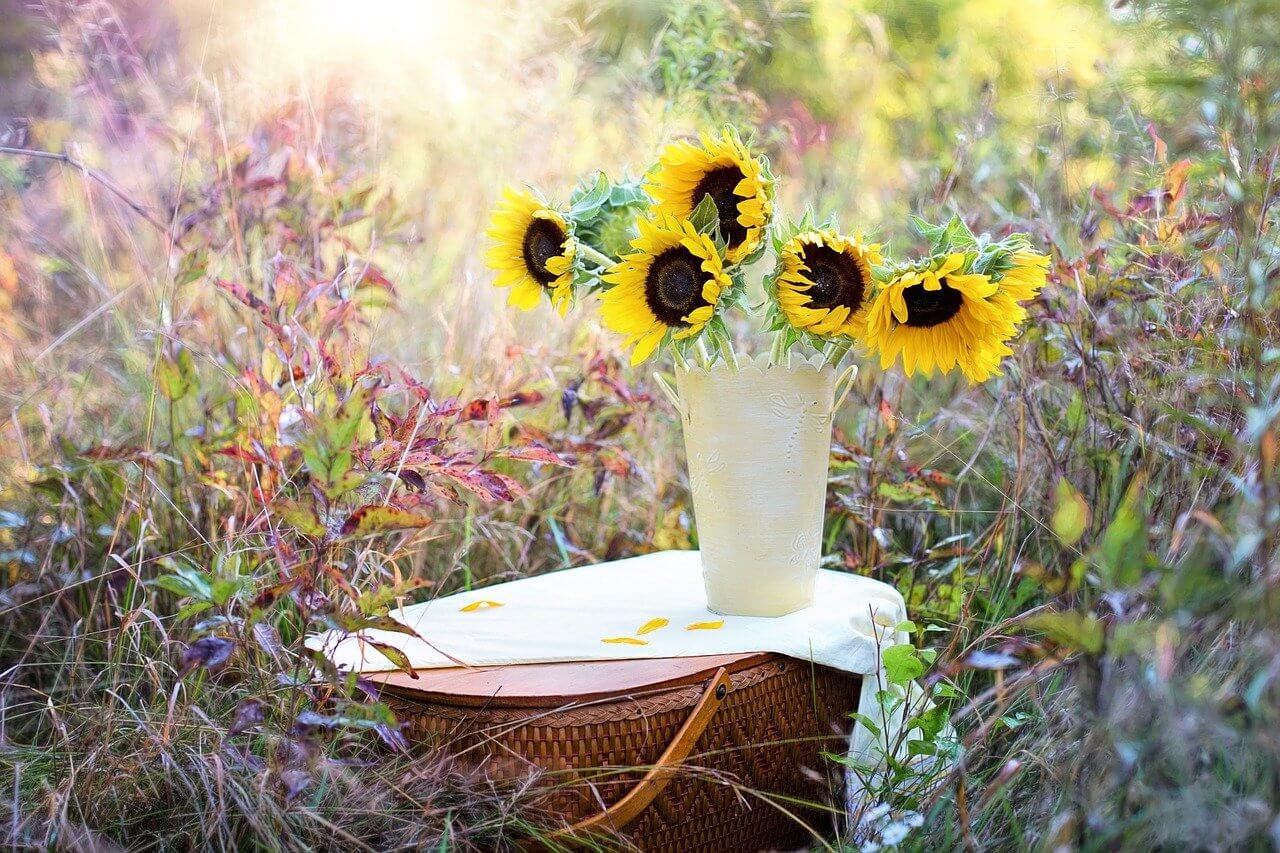
It may surprise you to know, if you are only growing sunflowers for the flowers or the seeds, that just about every part of the plant has its uses, from the petals to the seeds, and even the leaves. Here’s my post on how to preserve them.
Sunflower seeds are a tasty snack by themselves, and can be pressed into a culinary oil if you have enough of them, and the right equipment to do so.
The petals of sunflower can be used to extract a cheerful yellow dye, reminiscent of the bright color of the flowers themselves.
Sunflower leaves are very useful as animal fodder, as are the seeds. Many types of wild bird seed mix use a large proportion of sunflower seeds in their mixes, because of the high fat and nutrient content.
In times gone by, the thick fibrous stems of the sunflower were even used to make paper. This is a difficult and time consuming process, which involves boiling, beating and bleaching the stems, and to be honest it is much easier to just grab a standard piece of paper when you need one!
Sunflower roots have proven to be very effective at removing the effects of nuclear radiation from soil, and were planted widely around the areas of both Chernobyl and Fukushima.
Of course, the main use for a sunflower is its beauty! You can either leave them on their stems to brighten up your garden or field, or you can harvest the blooms to place in your house to add a little summer cheer to any room.
How To Use Sunflower Seeds
Sunflowers are beautiful flowers to have around the place, there’s no doubt about that, but they also have culinary uses too. Sunflower seeds are a healthy snack, that can be used in a variety of different ways.
These little seeds are a powerhouse of nutrients, plus they are very low in saturated fat, so they are great for a boost of energy without boosting your waistline.
The seeds you take off your sunflower heads are not the same as the ones you buy in the shops; they still have their outer husks. You can eat these, but they are not particularly tasty, and too many can cause stomach problems.
You can either munch on the seeds whole and just spit out the husks, or you can roast them and remove the outer seed cases when they are cooked, and will be easier to remove.
Here’s a neat little vid to show you a yummy way of cooking sunflower seeds:
Final Words
Growing sunflowers is incredibly easy (unlike some other crops, e.g. asparagus), and very rewarding. Whether you are growing them for the flowers or the seeds, or a combination of both, you will soon get hooked and want to grow an entire field of them! Well, now you can. Enjoy!
Is there a book available on how to start a sunflower farm
You didn’t really tell us which ones are best for gathering the seeds to eat?